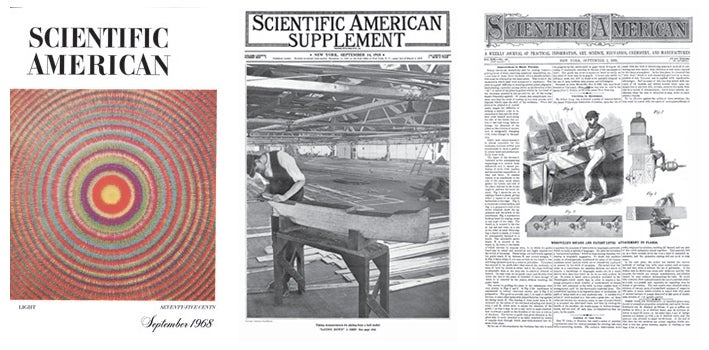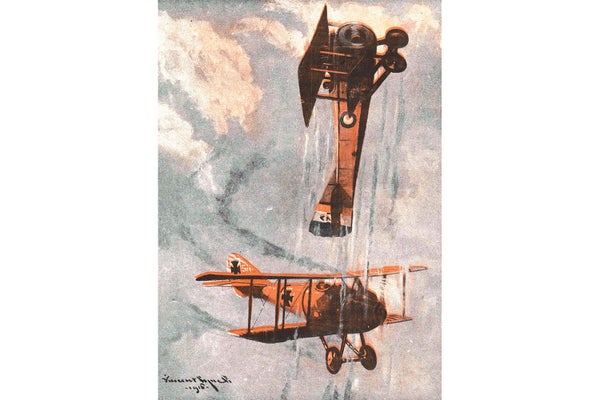1968
Advanced Lasers
“There are now hundreds of masers and lasers, generating frequencies over most of the electromagnetic spectrum, from the radio region far into the ultraviolet. Indeed, it seems that before long the art of stimulating emission will be extended into the X-ray region. Meanwhile the development of visible-light lasers is providing excitement enough. As we go to higher and higher powers, laser light is demonstrating extraordinary nonlinear phenomena in its interactions with matter. Some of the lasers now under development in the laboratory, such as the tunable and picosecond versions, are showing us that lasers so far have been rather simple devices. —Arthur Schawlow”
On supporting science journalism
If you're enjoying this article, consider supporting our award-winning journalism by subscribing. By purchasing a subscription you are helping to ensure the future of impactful stories about the discoveries and ideas shaping our world today.
Schawlow shared the 1981 Nobel Prize in Physics for his work on laser light.
1918
Opposing the Sea
“After nearly 70 years of consideration, the people of the Netherlands are about to begin the partway draining of the Zuyder Zee in order to add quite 523,440 acres to Holland's present area of dry land. The stress of war and the task of harboring hundreds of thousands of refugees has brought Holland to a realization of her shortage of agricultural lands. Nothing less than a massive dike 18 miles long will suffice to shut in the Zuyder Zee and, at the same time, be sturdy enough to hold the North Sea at bay when in its angriest moods. The greatest height known to have been attained by waves along the coast of the Zuyder Zee was in December of 1883, when, owing to an exceptionally severe gale, the surf then mounted embankments fully 17 feet above normal high tide. The height of the dike above sea level will be 17.6 feet near the North Holland end.”
War in the Air
“Speed, climbing ability, and marksmanship are only three factors in aerial combat. It is safe to say that maneuvering skill is by far the most important factor. The aviator who knows every trick of his profession stands the best chance of winning or escaping. A ‘stunt’ frequently employed at the front is the upward swoop followed by a tail slide. When a machine is being pursued by another which is blazing away at the tail of the first, the usual maneuver for the first pilot is to pull the control stick backwards, heading his machine straight up until it attains a vertical position. Here it ‘hangs’ by its propeller for just an instant, as is strikingly shown in our cover sketch, when it slides back and is finally brought into the level position again. Now it is behind the opponent and possesses the advantage.”
1868
Fashion Victims
“The medical journals are making a feeble crusade against the high-heeled and narrow-toed boots now in vogue. This fashion must be creating a rich harvest for the corn doctors, and it is sure to result in a greater or lesser degree of permanent deformity. When the heel is raised, as is the prevalent custom, the bones of the thigh, pelvis, and leg, as well as the foot, are thrown into abnormal positions; and the effect of such unnatural tension is sure to be perpetuated, in the shape of crooked shins, bandy legs, elephantine toe joints, and cramped ungraceful gait. Let us hope that before these evils shall have become greatly multiplied, fickle fashion may remove the cause, and give us something more sensible and endurable than these toe-screws.”
A Victorian Obsession
“The idea of being buried alive is one that fills the mind with horror, and the accounts which have from time to time appeared in the public prints, describing such occurrences, have always attracted the attention of a sensation-loving public. There are numerous and generally reliable tests for determining whether death has actually occurred previous to the commencement of decay, which are familiar to most people. Granted that in extremely rare cases, it is possible these should fail, it is difficult to perceive how Mr. Vester's patent burial-case is an improvement. It consists of an ordinary burial-case or coffin with a tube at the head, containing a ladder and a cord to enable the resuscitated individual to return to the upper air, provided he has strength to do it, which we think would in most cases be doubtful. The invention is claimed to be of inestimable service where parties have been interred while in a trance.”

